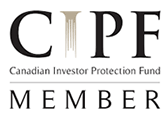
We hope that you are enjoying a happy holiday season despite the lockdown provisions. We hope you and your families are coping well. Here is wishing you a Happy New Year – and good riddance to 2020. It has been a crazy year!
To begin, we would like to comment on the recent U.S. election as many of you are invested in U.S. companies to some extent. Some of you had questioned whether we would make adjustments to our strategy in advance of the election. In making investment decisions, we do not give much consideration to geopolitics. In our experience, such events are often unpredictable; markets sometimes behave counterintuitively. Theories about the direction and size of the potential market impact are often wrong. And lastly, such events can create short term volatility but are generally inconsequential to your long-term returns.
If you owned, say, Apple for the past 20 years, it mattered not a whit that “Dubya” prevailed over Kerry in 2004. What mattered was that you had the vision to identify a good company and the fortitude to sit on a winner; to avoid the temptation to tinker.
In our experience, big winners in stocks are often wide-moated companies that are able re-invest at attractive rates of return during a long period of growth. The result is a compounding, or parabolic effect. Don’t underestimate the power of compounding – it is the investors greatest ally. What often gets in the way of exponential growth is emotion and the urge to act (assuming that you are fortunate enough to have chosen the right stocks, that is). To some, activity is seen as productivity. Take Charlie Munger’s advice: “the first rule of compounding is to never interrupt it unnecessarily”. So we don’t advise investors to trade in and out of stocks.
At the time of writing, the market environment is bullish based, ostensibly, on positive news about the surprising effectiveness of vaccines from Pfizer / BioNTech and Moderna and the prospect of an economic recovery.
It confounds many investors to see the stock market making new highs despite a sharp contraction in the global economy. To many, there is a disconnect between a struggling economy and a soaring stock market. But there have been many times in history that the stock market seemed out of step with the economy. And as we explained in our last correspondence, the market rally from its March low may not necessarily be irrational (more on this later).
In an October, 2020 memo to clients, Howard Marks summed up his view on the stock market:
For years leading up to 2020, I described the investment environment as follows [emphasis, ours]
- An unusually high level of uncertainty (mostly exogenous and geopolitical)
- The lowest prospective returns ever
- Asset prices that were full to excessive
- Pro-risk behavior being engaged in by investors trying for high returns
Taken together, these things told me we were living in a low-return world in which the promised returns didn’t fully compensate for the risks[1].
In the wake of the market recovery since March, Marks believes that “we’ve returned to the market conditions I used to go on about[2]”.
It is noteworthy that we were able to develop what appears to be two very effective vaccines in a matter of 9-10 months or so. This is yet another example of the powerful force of human ingenuity; the capacity to solve urgent problems. This ingenuity is often underestimated. It was only 40-50 years ago that one of the more pressing problems facing humanity was the perception that overpopulation would lead to famine and millions of deaths. This Malthusian thinking was, at the time, popular and its consequences thought to be inevitable. What happened, of course, was that ingenuity created a world of abundance – and not scarcity. The Malthus adherents, thinking linearly and extrapolating the past, overlooked or underestimated the forces of human ingenuity, innovation and adaption.
In a year such as 2020 marked by a global pandemic, it can be difficult to remain optimistic about the economy and the outlook for stocks.
But here is an uplifting thought for you: the march to greater abundance and prosperity for all continues to increase – but you never hear about that on the evening news. This idea that life is getting better in terms of health / nutrition, wealth / standard of living, despite a constant stream of news to suggest otherwise, is the theme of British science writer Matt Ridley’s 2010 book, “The Rational Optimist: How Prosperity Evolves”.
According to Ridley, the human race is a “problem-solving machine”. Here are some uplifting facts from Ridley:
“Compared with 50 years ago, when I was just four years old, the average human now earns nearly three times as much money (corrected for inflation), eats one third more calories, buries two thirds fewer children, and can expect to live one third longer. In fact, it’s hard to find any region of the world that’s worse off now than it was then, even though the global population has more than doubled over that period.
The rich get richer, but the poor do even better. Between 1980 and 2000, the poor doubled their consumption. The Chinese are ten times richer and live about 25 years longer than they did 50 years ago. Nigerians are twice as rich and live nine more years. The percentage of the world’s people living in absolute poverty has dropped by over half[3]”.
Innovation and adaptation arises from human ingenuity – an infinite resource. As Ridley explains:
“The more we prosper, the more we can prosper. The more we invent, the more inventions become possible. The world of things is often subject to diminishing returns. The world of ideas is not: The ever-increasing exchange of ideas causes the ever-increasing rate of innovation in the modern world. There isn’t even a theoretical possibility of exhausting our supply of ideas, discoveries, and inventions[4]”.
So it is important not to lose sight of the long game. As it relates to investing, it is important to remain optimistic for the reason that compounding creates wealth if it is left to work and not interrupted. Compounding also relies on patience. Charlie Munger calls it “sitting on your assets”.
This brings us to some thoughts on a book that we read many years ago, “100-1 in Stocks”. The author, Thomas Phelps looked at stocks that went up 100-fold to see if there was a common theme among these big winners (and importantly, could these successes be replicated?). We love Phelps’ observation that, “To make money in stocks, you must have vision to see, courage to buy and patience to hold. Patience is the rarest of the three[5].” The vision to see, in our view, is a qualitative judgement about competitive advantage, or “moat”, and growth potential, or “runway”.
Patience is a common theme among the investment greats.
You may recall a few years ago that we introduced the late Philip Carret, an investment legend that Warren Buffet once described as one of his heroes. Carret founded one of the first mutual funds in America in 1928. He continued to manage this fund through the Great Depression and the Second World War, and his career ultimately encompassed a total of 31 bull markets, 30 bear markets and 20 recessions[6].
In his book The Art of Speculation, Carret gives this advice: “There is no substitute for buying quality assets and allowing them to compound over the long term. Patience can produce uncommon profits[7]”. Wall Street Journal columnist Jason Zweig had this to say about Carret in 2015, “At 97, Phil Carret has well learned an essential truth about markets: Traders rarely die rich, patient investors often do[8]”.
Another way that investors get shaken out of their stocks is a big market rally, like we have witnessed. The urge to “lock in” or “protect” gains is compelling. In this scenario, the thoughtful investor might reason, “Surely the market will pull back from here, especially in light of the world’s problems”. Perhaps, but not necessarily. We simply don’t know.
Geopolitics does not inform our decision-making, but we work hard to remain informed. We may not know the future, but it is important to know where we stand. Which brings us to an observation about the economy – one that we discussed in our last letter. It is the build up of risk owing to excesses.
Following is an excerpt from a recent FT article that introduces this idea for discussion. The author is Mohamed El-Erian, chief economic adviser at Allianz. El-Erian cites risks that “spell trouble for the U.S. economy[9]”.
According to El-Erian, “the U.S. Federal Reserve will be pushed yet again to do more with increasingly ineffective and inevitably distortionary policy tools[10]”. Here, he refers to monetary policy (Fed borrowing / printing of money, and other intervention such as buying bonds and ETFs).
Recall from our last letter, we raised the question of what the implications might be to the unprecedented and seemingly unconstrained intervention / stimulus by the Canadian and U.S. central banks.
El-Erian continues:
“This venturing into even bigger experimental unconventional monetary policies will do little to genuinely stimulate the economy. Instead, it is likely to create further distortions in financial markets, increase incentives for irresponsible risk-taking and lead to the misallocation of resources throughout the economy. This will heighten the threat of financial instability[11]”. (emphasis is ours).
The gist of it is that financial and other markets are seeing elevated asset prices owing to stimulative interest rates and other forms of intervention. At least that is the narrative buoying markets – for now. Here is Howard Marks in an October, 2020 memo to Oaktree clients to explain:
“It’s not easy to find opportunities today. We see interest rates being [close] to zero – the 2 year Treasury is 0.1% – that’s pretty close to zero. And when rates on Treasuries go to zero, everything else looks very attractive, so stocks trade way up and bonds trade way up. And you get to a point where everything is selling at a fair price relative to the very low interest rates, but still at very low prospective returns, and that’s where we are. What the low rates say is that it’s fair to have low prospective returns – but it’s not attractive[12]” (emphasis ours).
The consequence of these conditions according to Marks is a “build up of risk taking[13]”. Marks sees “risky asset classes becoming crowded with eager capital – something that’s not beneficial for risk-adjusted returns. Bad things tend to happen when FOMO – the fear of missing out – takes over from risk aversion, or the fear of losing money[14]”.
We agree with El-Erian and Marks that today’s market conditions create risk for today’s investor, particularly for those entering or already in the “de-cumulation phase”, which describes the circumstances for many of you. At this time we are being cautious because prospective returns, owing to high prices, look inadequate relative to risk for many stocks we might otherwise look to buy. In short, the risk / reward trade-off looks unappealing on many stocks that are generally regarded as “good” (having the desirable characteristics of moat, runway, and a perceived high rate of growth potential). We would go further to say that there is a frenzy occurring in some pockets of the U.S. and Canadian stock markets. With respect to that cohort, we are reminded of a Steve Jobs quip, “sometimes it is better to be a pirate than to join the navy”. Now might be one of those times.
Stocks look expensive relative to historical averages but that isn’t necessarily a reason to sell. As we previously explained, extremely low interest rates has the effect of elevating the prices of financial assets (all else being equal). The U.S. Federal Reserve and the Bank of Canada have indicated that benchmark interest rates will remain low for a few more years[15],[16].
And you may recall our discussion earlier this year about U.S. stock valuations having remained persistently high for 20+ years.
Bill Miller touched on this idea in his Q3 2020 letter to Miller Value investors[17]:
“…while the S&P 500’s price/earnings and price/book ratios currently exceed their pre-1995 levels, they aren’t remarkably high by the standards of the preceding 25 years. If current U.S. stock values indicate an investment bubble, then so have several other values during the past 25 years”.
So, stock valuations may remain high and interest rates could remain low for many years. Stocks are risky, yes, but we cannot overlook the risk of being out of stocks. Inflation and spending needs can devour your capital over a lengthy period of retirement.
Here is another thought: Perhaps the experience of the last 25 years is indicative of a new paradigm (i.e. the “equity risk premium” demanded by investors may have shrunk; investors are willing to accept lower returns going forward). We cannot be closed minded about this possibility. Also, the composition of the economy and the stock market today is different today (as we explained in past letters) – perhaps higher valuations are justified to an extent.
So, in summary:
- Stock prices are generally high. The corollary is that is that many stocks look like a poor risk reward bet (high risk, low prospective returns);
- These conditions could persist for an extended period; and
- Government stimulus may have created distortions in asset prices and a buildup of risk.
These conditions lead us to think that caution is warranted. Generally speaking, we are being more defensive than aggressive. Nevertheless, we will stick to our strategy of buying and holding “moaty” companies for the long haul; being patient and allowing compounding to work. Like Carret and Phelps we espouse simple, timeless investment principles. We firmly believe that a simple strategy is best. As Einstein is quoted as saying, “The definition of genius is taking the complex and making it simple[18]”.
As 2020 comes to a close, we want to wish you the very best for 2021. Here is to vaccines, the end of a cruel pandemic, to greater health, wealth and prosperity. Once again, thank you for your continuing friendship and patronage.
Best wishes to you and your family from your Apex team: Shawn, Scott, Mike, John, Will, Denise E., Paul, Tina, Jason, Denise N., Lisa, Marta, Darlene, Andrene, Paula, Jeff, and Greg.
Disclaimer:
The information contained herein was obtained from sources believed to be reliable, however, we cannot represent that it is accurate or complete. This report is provided as a general source of information and should not be considered personal investment advice or solicitation to buy or sell any securities mentioned. The views expressed are those of the author and not necessarily those of ACPI.
Aligned Capital Partners Inc. is a member of the Canadian Investor Protection Fund and the Investment Industry Regulatory Organization of Canada.


[1] “Coming into Focus”, Howard Marks, Oaktree Capital Management, October 2020, https://www.oaktreecapital.com/insights/howard-marks-memos
[2] Ibid.
[3] 17 REASONS TO BE CHEERFUL, Matt Ridley, March 1, 2012, http://www.rationaloptimist.com/blog/17-reasons-to-be-cheerful-1/
[4] Ibid.
[5] 100-1 in Stocks, Thomas Phelps, 1972, https://www.amazon.ca/100-Stock-Market-Distinguished-Opportunities/dp/1626540292
[6] “Timeless Lessons from a Man Buffett called his Mentor”, Economic Times, Anupam Nagar, December 5, 2020, https://economictimes.indiatimes.com/markets/stocks/news/timeless-investing-lessons-from-a-man-buffett-called-his-mentor/articleshow/79579703.cms
[7] The Art of Speculation, Philip Carret, 2015, https://www.amazon.ca/dp/B06XGPY7J3/ref=dp-kindle-redirect?_encoding=UTF8&btkr=1
[8] “Philip Caret: Buy’em Cheap and Hold’em”, Jason Zweig, Oct. 28, 2015, https://jasonzweig.com/philip-carret-buy-em-cheap-and-hold-em/#:~:text=At%2097%2C%20Phil%20Carret%20has,rich%2C%20patient%20investors%20often%20do.&text=%E2%80%9CThere’s%20no%20point%20in%20taking,indicates%20a%20failure%20of%20judgment
[9] “Mohamed El-Erian: A divided electorate spells trouble for the U.S. economy in three key areas”, Financial Post, Mohamed El-Erian, November 5, 2020, https://financialpost.com/financial-times/mohamed-el-erian-a-divided-electorate-spells-trouble-for-the-u-s-economy-in-three-key-areas
[01] Ibid.
[11] Ibid.
[12] Gurufocus, https://www.gurufocus.com/news/1232987
[13] “Coming into Focus”, Oaktree Capital Investments, Howard Marks, Oct. 13, 2020, https://www.oaktreecapital.com/insights/howard-marks-memos
[14] “Coming into Focus”, Oaktree Capital Investments, Howard Marks, Oct. 13, 2020, https://www.oaktreecapital.com/insights/howard-marks-memos
[15] “Bank of Canada keeps rate steady at 0.25%, maintains pledge of it staying low until 2023”, CBC, December 9, 2020, https://www.cbc.ca/news/business/bank-of-canada-benchmark-interest-rate-1.5834049
[16] “Federal Reserve Says It Will Keep Interest Rates Near Zero Until 2023”, Forbes, Sergei Klebnikov, September 16, 2020, https://www.forbes.com/sites/sergeiklebnikov/2020/09/16/federal-reserve-says-it-will-keep-interest-rates-near-zero-until-2023/?sh=23582505798d
[17] Bill Miller Q3 2020 Market Letter, Bill Miller, October 14, 2020, https://millervalue.com/bill-miller-3q-2020-market-letter/
[18] Goodreads, Einstein quotes, https://www.goodreads.com/quotes/608091-the-definition-of-genius-is-taking-the-complex-and-making









